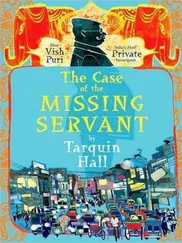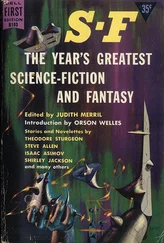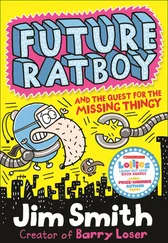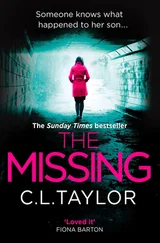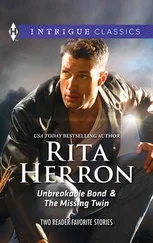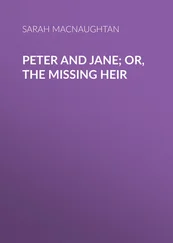“Afternoon.”
“Afternoon.”
“I don’t suppose you know whether a man by the name of Fermín Ibáñez can be found down here?”
“Not that I know of…”
“Don’t you know anyone around here called Ibáñez?”
“No, not Ibáñez,” said the woman, slapping at a mosquito on her forearm.
The kids stared at me with curiosity.
Next to them was the sky blue body of a Fiat 600 that served as a hencoop. There was washing hanging from a line. Not a single flowerbed, flower, or plant. Nothing but trash among the long grass.
I cycled on. The further I went, the more tired I felt. I started to ask myself what I was doing, if I really thought I was going to find what I was looking for. A painting stolen forty years earlier by a guy who most likely burned it or threw it into the river.
I left the track and headed down towards the shore. The slight downwards slope helped me continue despite my skepticism. There was no one at the pétanque court. The plastic chairs and tables were piled up in one corner and the kiosk was closed.
I reached the part known as Los Italianos, some meadows that had started out as dairy farms, then become sheep enclosures, and now were camping sites. The road stretched beneath a grove of eucalyptus trees. I saw new shacks that hadn’t been there before, corrugated iron huts, patched-up shelters. A shanty town had sprung up there in recent years.
A young boy jumped out from behind a tree and fired a gun at me. Hearing the report, I was slow to duck down, and lost control of my bike. I landed head first in the grass beside an irrigation ditch. I heard laughter. Several more kids hiding behind the trees ran off. I shouted at them, then looked down at my body. I wasn’t hurt, apart from a graze on my knee. I got up. A young girl carrying an orange plastic bowl full of washing saw me looking round in panic and said, “They’re only blanks.”
I thanked her, and couldn’t help staring after her. In her blue dress and with wet hair, she looked beautiful as she walked away between the rubble-filled potholes and tufts of grass, her flip-flops slapping on the ground. She turned back for a second. I’d like to be able to say she smiled at me, but she didn’t. She simply kept going, and I walked on, pushing my bike.
I found myself getting deeper and deeper into this new shanty town, and so I turned off along a dirt path leading down to the river. Before long through the trees I could see the muddy, tawny-colored water that stretched from here right across to Uruguay, which always used to seem to me so distant and difficult to reach.
There was a path bordering the riverbank. I came across several anglers with fishing rods. At their feet lay chickens they had gutted to use the innards as bait. Flies were clustering on the dead flesh, the buckets, their rubber boots. I asked if they knew someone called Ibáñez, a black fisherman. None of them did.
I reached a spot where there was a slate that said “Parrots for sale,” then another one declaring “El Pajarito Grill.” It wasn’t clear whether the parrots they sold were alive or were on the menu. Then I came to a corrugated iron stall, where a scrawny cook was turning some spicy sausages over a bed of hot coals. I said hello, sat down for a rest, and ate a sausage sandwich with a glass of wine.
For something to say, I asked him how long Los Italianos had been inhabited.
“The shanty?”
“Yes.”
“It must be two or three years. Nowadays, here in Barrancales,” he said, thinking I came from Buenos Aires, “anyone who doesn’t work for the municipality lives in a shanty town.”
“Doesn’t the Town Hall help them in any way?”
“You must be joking! Those thieves even steal the mattresses and clothing people donate.”
I asked him about Ibáñez. He paused while he wiped down the counter with a cloth, then said:
“Ibáñez? There is an Ibáñez, but over on the Uruguayan side.”
“Fermín Ibáñez?”
“Yes. I’m not sure about his first name,” he said. “But he’s a fisherman called Ibáñez.”
“Is he black?”
“Yes… more like mulatto, in fact.”
“Directly across from here?”
“Yes, a bit out of the way though, up towards Paysandú.”
“How can I get across?”
“On this side, at Gervasoni’s, beyond the saw mill, there’s a ferry that takes cars across.”
“I didn’t think it was still going…”
“Yes, they brought it back because people don’t have the money to drive as far as the bridge, because of the price of gas and the tolls.”
“What time does it cross?”
“Oh… around five, more or less.”
I walked along the riverbank to Gervasoni’s. There was nobody on the quay: it was still early. I pushed into the undergrowth for a few meters and lay down in the shade of an ash tree, the bike beside me. I think I soon dozed off.
I woke an hour later, staring up at the treetop, not knowing what on earth I was doing there. I felt as if I were inside one of those strips of foliage that Salvatierra loved to paint so much: the empty space between trees, the thick undergrowth, with hidden birds; an almost abstract composition he often used as a transition between scenes, as though the eye of the observer were at the height of the birds flying through the woods, full of shadows splashed with light; secret, intimate places where there are no human beings, where the eye gazes as if it were flying without touching the ground, flitting from tree to tree, solitary, in the fastness of the air, the dense greenery of nandubays, carobs, hackberries, ceibas in blossom, surrounded by small birds like scarlet flycatchers, larks, yellow-headed woodpeckers, thrushes, parrots.
I sat up a little and saw a rusty ferry tied up at the quay. It was almost empty. When a Customs inspector had finished checking documents, a car and two motor scooters made their way off the boat, and some men unloaded wooden crates. I went down and asked the person who seemed to be in charge if the ferry was going back across. He told me that if any cars arrived, they might be going. I sat for some time on the quay, staring down at the barely moving waters. The little brown waves lapped against the columns, making the bits of floating rubbish sway to and fro.
Our entire family had crossed on a couple of occasions to go on holiday at La Paloma in Uruguay. When my grandfather died, Salvatierra had spent part of his inheritance on those two or three summers by the sea. We rented a house near the beach. Salvatierra used to take lengths of prepared canvas with him, and paint on the veranda. When he got back, he’d add them to the latest roll. We made the crossing on a ferry that left us in Fray Bentos, and from there we took the train to La Paloma, changing in Montevideo. For me, the holidays always began on board the ferry.
After two hours waiting on Gervasoni’s quay, I felt weary. The river seemed to me too wide, as if I had to swim across. I’d no idea what I was going to do, on my bike, looking for a fisherman who I had heard lived over on the far shore. In the end, the ferry didn’t leave because no cars showed up. I was able to head for home, comforted by the feeling that I had been defeated by insurmountable obstacles rather than by my own weakness. I told myself it was better this way. When my brother arrived, we could take his car and cross by the international bridge.
On my way back I saw one of those skies that Salvatierra so loved to paint. One of those deep, shifting, powerful skies. He sometimes painted scattered clouds growing smaller towards the horizon, which gave the sky its true dimension. He could create vast aerial spaces that left you giddy, as if you might plunge headfirst into the canvas. I knew — I had learned — what kind of skies interested him and so some afternoons when I went to the shed after school, I would say, “There’s a good sky outside,” and we would go out to look. It’s something I still do without realizing it, although my father had been dead these many years. I did it that afternoon as I was cycling slowly back to Barrancales: I saw the huge sky, the sky of flatlands, an intense blue with clouds tall as mountains or entire regions, and I silently told Salvatierra we should go out and look.
Читать дальше



